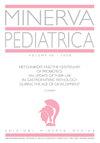体外膜氧合治疗急性呼吸窘迫综合征免疫功能低下儿童:法国转诊中心队列
IF 2.6
4区 医学
Q2 Medicine
引用次数: 4
摘要
背景:免疫力低下的儿童很可能发展为难治性急性呼吸窘迫综合征(ARDS)。为这些患者提供体外生命支持(ECLS)的有用性是一个有争议的话题。本研究的目的是报告免疫功能低下和非免疫功能低下儿童接受静脉-静脉ECMO的结果,并比较与死亡率相关的因素。方法:我们在法国Armand Trousseau医院儿童ECMO中心进行了一项回顾性单中心研究,包括所有1个月至18岁需要ECLS治疗ARDS的儿童患者。结果2007年至2018年,111例患者因呼吸衰竭接受ECMO;其中25例免疫功能低下。免疫功能低下患者重症监护出院后6个月生存率明显低于非免疫功能低下患者(41.7% vs. 62.8%;P = 0.04)。两组ARDS严重程度相似。真菌性肺炎仅在免疫功能低下的患者中报告(12.5% vs对照组0%;P = 0.001)。在免疫功能低下组中出血并发症明显更频繁,并且该组也更频繁地需要输血。结论重症监护出院后6个月,免疫功能低下患儿的ECMO生存率低于非免疫功能低下患儿。但是,对有利结果的期望是真实的,如果他们的病情可能与良好的长期生活质量相适应,那么这是值得的。本文章由计算机程序翻译,如有差异,请以英文原文为准。
Extracorporeal membrane oxygenation for immunocompromised children with acute respiratory distress syndrome: a French referral center cohort.
BACKGROUND
Immunocompromised children are likely to develop a refractory acute respiratory distress syndrome (ARDS). The usefulness of providing extracorporeal life support (ECLS) to these patients is a subject of debate. The aim of our study was to report the outcomes and to compare factors associated with mortality between immunocompromised and non-immunocompromised children supported with veno-venous ECMO.
METHODS
We performed a retrospective monocentric study in the French pediatric ECMO center of Armand Trousseau Hospital, including all pediatric patients aged from 1 month to 18 years requiring ECLS for ARDS.
RESULTS
Between 2007 and 2018, one hundred and eleven (111) patients underwent ECMO for respiratory failure; among them twenty-five (25) were immunocompromised. Survival rate at 6 months after intensive care discharge was significantly lower for immunocompromised patients compared to non-immunocompromised ones (41.7% vs. 62.8%; p = 0.04). ARDS severity was similar between the 2 groups. Fungal pneumonias were reported only in immunocompromised patients (12.5% versus 0% in the control group; p = 0.001). Bleeding complications were significantly more frequent in the immunocompromised group and blood product transfusions were also more frequently required in this group.
CONCLUSIONS
Six months after intensive care discharge, survival rate of immunocompromised children supported with ECMO for pediatric ARDS is lower than for nonimmunocompromised patients. But, the expectation for a favorable outcome is real and it is worth it if their condition is likely to be compatible with a good long-term quality of life.
求助全文
通过发布文献求助,成功后即可免费获取论文全文。
去求助
来源期刊

Minerva pediatrica
PEDIATRICS-
CiteScore
2.70
自引率
3.80%
发文量
1
审稿时长
>12 weeks
期刊介绍:
Minerva Pediatrica publishes scientific papers on pediatrics, neonatology, adolescent medicine, child and adolescent psychiatry and pediatric surgery. Manuscripts may be submitted in the form of editorials, original articles, review articles, special articles, letters to the Editor and guidelines. The journal aims to provide its readers with papers of the highest quality and impact through a process of careful peer review and editorial work.
 求助内容:
求助内容: 应助结果提醒方式:
应助结果提醒方式:


